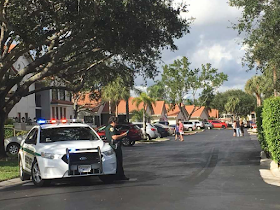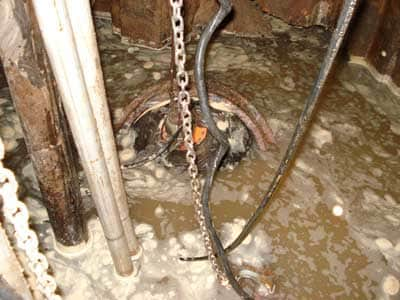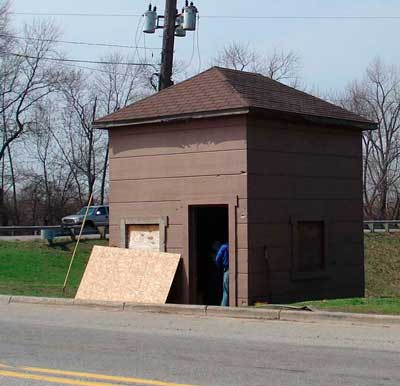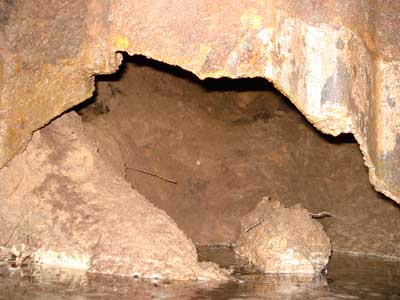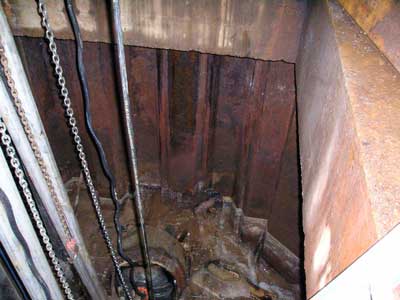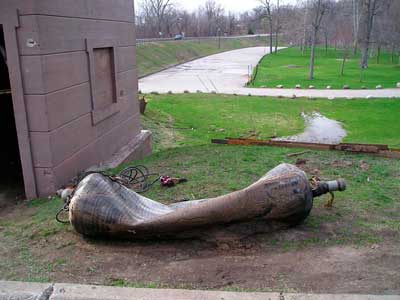 |
| Petty Officer 2nd Class Daniel Dill, 29, dead |
 |
| Drunk driver and reality TV "star" Melissa Hancock, 25 |
 |
| Drunk driver and reality TV "star" Melissa Hancock, 25 |
During the morning of the crash, Dill was a designated driver and headed to pick up his wife from a night out
VIRGINIA BEACH, Virginia --
A reality TV "star" killed a U.S. Coast Guard technician in a drunken wrong-way collision on a Virginia highway, authorities said.
Melissa
Hancock, 25, has been charged with driving while intoxicated and
maiming following the death of Petty Officer 2nd Class Daniel Dill, 29,
news outlets reported.
Hancock appeared on Lifetime's "Little Women: Atlanta," a reality show that focuses on women of short stature.
Dill was a Logan Township, New Jersey, native who was stationed in Portsmouth as an information systems technician.
Virginia
State Police said Hancock struck Dill head-on around 2 a.m. Nov. 4 on
Interstate 264. He died of his injuries the next day.
Dill had
been on his way to pick up his wife and her friends, who had been
celebrating her birthday. Dill, who didn't drink, had offered to drive
the group so no one had to worry about driving home after drinking.
Hancock
told a state police trooper she drank two to four mixed drinks at a
local nightclub about an hour before the crash, investigators said.
Hancock's blood alcohol content tested at 0.112 percent two hours after
the crash, exceeding the 0.08 legal limit, authorities said. Hancock is 4
feet (1.2 meters) tall and weighs 77 pounds (35 kilograms), according
to a court summons.
"Everyone involved feels horrible about the
tragic accident," said Hancock's attorney, Stephen Pfeiffer. "We are
investigating the accident and the allegations against Miss Hancock."
Natalie
Dill's father, Steven Rocha, told The Virginian-Pilot that his
son-in-law was "the most compassionate guy you would ever meet."
"He was the best son-in-law a father could ever have. We loved him as if he were our son."
Dill will be buried with military honors on Saturday.
Most drunk-related accidents occur in the early a.m. hours like this one. This freak of nature should rot in jail, but they always get away with relatively light sentences. In our opinion, this is murder, she the life of a promising young man and she needs either life in prison or the death penalty. This is the only way to reduce the number of drunk-related accidents.
This drunk driver will be doing plenty of hand cocks while in jail.






==================
VIRGINIA BEACH, VA
Natalie Dill planned to celebrate her 27th birthday by going out to dinner with her husband and family and then heading to the Oceanfront with friends.
Her husband, Daniel Dill, didn’t drink. He told her to go have a good time and offered to pick the group up later so they didn’t have to worry about driving home.
Dill was on his way to pick up his wife and her friends about 2 a.m. Saturday when he crossed paths with a drunken driver going the wrong way on Interstate 264, according to court documents.
A woman driving a 2011 Cadillac struck his 2009 Mazda head-on in the eastbound lane, just west of the Birdneck Road exit, according to a police summary of the incident.
Dill died just after midnight Sunday at Sentara Virginia Beach General Hospital. The 29-year-old had suffered a major spinal cord injury, his brain was severely swollen, and he had internal injuries and broken bones, according to his family. They made the decision to withdraw care once doctors explained his prognosis.
The Cadillac’s driver, Melissa Ann Hancock, was charged with DUI maiming immediately after the crash, but that charge may be upgraded, said Macie Allen, a spokeswoman for the commonwealth’s attorney.
Hancock, 25, who has been featured on the reality TV show ”Little Women: Atlanta,” told a state police trooper she had two to four mixed drinks at Peabody’s Nightclub at the Oceanfront about an hour before the crash, the police summary said. Her blood alcohol content tested at 0.112 two hours later, the summary said. Hancock is 4 feet tall and weighs 77 pounds, according to a court summons.
Hancock was granted a $15,000 bond during a court hearing Tuesday, and was ordered to wear a GPS device that also monitors alcohol use.
Prosecutors objected to the bond decision and have filed an appeal, Allen said.
Hancock works in insurance sales and has a prior marijuana conviction on her record, according to a bail determination sheet in her court file. The document said she has lived in Virginia Beach for four weeks and began working for GEICO three weeks ago.
“Everyone involved feels horrible about the tragic accident,” said Hancock’s attorney, Stephen Pfeiffer. “We are investigating the accident and the allegations against Miss Hancock.” Pfeiffer said he was aware that his client had been involved in a reality television show, but did not know which one.
Natalie Dill’s father, Steven Rocha, said his son-in-law was “the most compassionate guy you would ever meet.”
“He was the best son-in-law a father could ever have. We loved him as if he were our son.”
Dill was a petty officer 2nd class in the Coast Guard, and lived in Portsmouth with his wife and their two dogs. He joined the Coast Guard in 2006 after graduating from high school in Logan Township, N.J., following in the footsteps of his older brother. His younger brother would later join them.
“He was the most clean-cut guy,” Dill’s father, Chris Dill Sr., said. “He never drank or smoked, and you had to really push his buttons to get him to curse. There wasn’t a confrontational bone in his body.”
Steven Rocha said his daughter was devastated by her husband’s death. The couple met several years ago at a sushi restaurant in Suffolk where Natalie was waiting tables at the time. Dill had come in there with some Coast Guard buddies and soon became a regular.
“Dan didn’t even like seafood,” Rocha said. “He just kept going back to see her.”
The couple married after about a year of dating. They bought a house a couple of years ago, and were hoping to start a family soon, Chris Dill said.
“They were an awesome couple,” he said.
================
VIRGINIA BEACH, Va. (WVEC) -- Virginia State Police say a man is dead following a crash that was caused by a wrong-way driver.
The crash happened just after 2 a.m. on November 4 west of Birdneck Road on I-264 in Virginia Beach.
Police say 25-year-old Melissa Hancock was traveling westbound on I-264 in the eastbound lanes when she struck a 2009 Mazda head-on.
The driver of the Mazda, Daniel Dill, was taken to Virginia Beach General Hospital and died of his injuries the following day.
Family members said Dill's injuries were too serious.
"There's no words to explain what we're going through," said Daniel's father-in-law, Steven Rocha. "This isn't something I'd wish on anyone."
Dill was a member of the Coast Guard for 11 years. He lived in Portsmouth with his two dogs and wife of seven years.
During the morning of the crash, Dill was a designated driver and headed to pick up his wife from a night out, Rocha explained.
"We want everybody to know what a good man Daniel Dill was and is. What a great son-in-law he was and how much joy he brought to our family," said Rocha.
Hancock, who was a member of a reality show called "Little Women: Atlanta" is charged with DUI/maiming and driving the wrong way.
Court documents revealed that the four-foot, 100-pound woman consumed two to four mixed drinks about an hour before the crash and had a BAC of .112. The legal limit in Virginia is .08.
Hancock was released from the Virginia Beach Jail on a $15,000 bond.
She is due back in court for a bond appeal hearing next Tuesday, according to Kristi Hopkins with the Commonweath Attorney's office.
The office is reviewing the case for additional charges.
Rocha told 13NewsNow that prosecutors told him they will pursue a DUI Manslaughter charge.
"She's just going to have to pay the consequences for that decision," said Rocha. "And unfortunately Daniel paid the consequence for that, too."

































